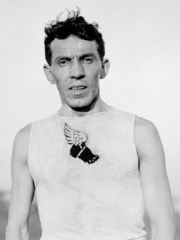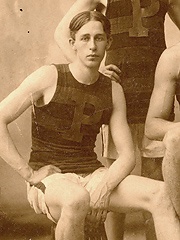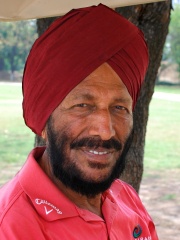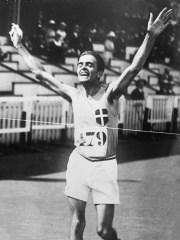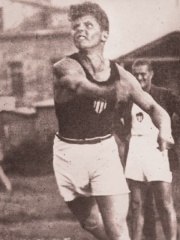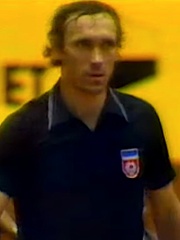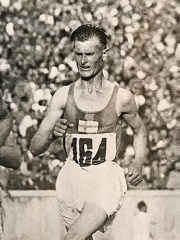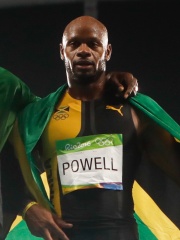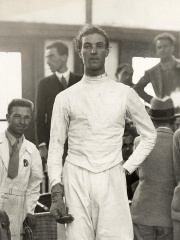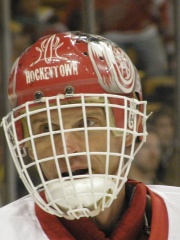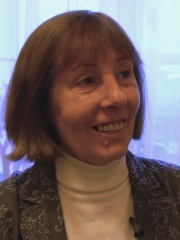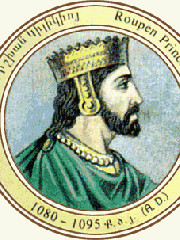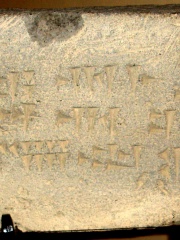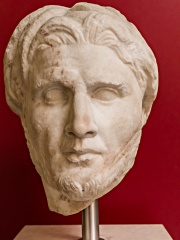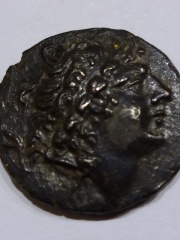ATHLETE
Meriones

 Meriones
Meriones
In Greek mythology, Meriones ( mə-RY-ə-neez; Ancient Greek: Μηριόνης, romanized: Mēriónēs) was the Cretan son of Molus and Melphis or Euippe. Molus was a half-brother of Idomeneus. Like other heroes of mythology, Meriones was said to be a descendant of gods. Read more on Wikipedia
Since 2007, the English Wikipedia page of Meriones has received more than 9,115 page views. His biography is available in 19 different languages on Wikipedia (up from 18 in 2019). Meriones is the 256th most popular athlete (down from 204th in 2019), the 162nd most popular biography from Turkey (up from 904th in 2019) and the most popular Turkish Athlete.
Memorability Metrics
9.1k
Page Views (PV)
58.21
Historical Popularity Index (HPI)
19
Languages Editions (L)
6.56
Effective Languages (L*)
2.05
Coefficient of Variation (CV)
Among ATHLETES
Among athletes, Meriones ranks 256 out of 6,025. Before him are Arthur L. Newton, Walter Tewksbury, Milkha Singh, Ugo Frigerio, Aleksander Klumberg, and Dragutin Šurbek. After him are Ilmari Salminen, Terry Fox, Asafa Powell, Giulio Gaudini, Dominik Hašek, and Tatyana Kazankina.
Most Popular Athletes in Wikipedia
Go to all RankingsArthur L. Newton
1883 - 1950
HPI: 58.28
Rank: 250
Walter Tewksbury
1876 - 1968
HPI: 58.27
Rank: 251
Milkha Singh
1935 - 2021
HPI: 58.27
Rank: 252
Ugo Frigerio
1901 - 1968
HPI: 58.26
Rank: 253
Aleksander Klumberg
1899 - 1958
HPI: 58.25
Rank: 254
Dragutin Šurbek
1946 - 2018
HPI: 58.25
Rank: 255
Meriones
HPI: 58.21
Rank: 256
Ilmari Salminen
1902 - 1986
HPI: 58.20
Rank: 257
Terry Fox
1958 - 1981
HPI: 58.20
Rank: 258
Asafa Powell
1982 - Present
HPI: 58.17
Rank: 259
Giulio Gaudini
1904 - 1948
HPI: 58.16
Rank: 260
Dominik Hašek
1965 - Present
HPI: 58.13
Rank: 261
Tatyana Kazankina
1951 - Present
HPI: 58.13
Rank: 262
In Turkey
Among people born in Turkey, Meriones ranks 162 out of 169. Before him are John the Cappadocian (490), Ruben I, Prince of Armenia (1025), Kekaumenos (1020), Rusa III (-650), Echion (-350), and Kuber (null). After him are Zipoetes I of Bithynia (-354), Dares Phrygius (450), Diphilus (-350), Lucius Marcius Philippus (-150), Theodotus of Byzantium (200), and Ariarathes IX of Cappadocia (-150).
Others born in Turkey
Go to all RankingsJohn the Cappadocian
POLITICIAN
490 - 548
HPI: 59.39
Rank: 156
Ruben I, Prince of Armenia
POLITICIAN
1025 - 1095
HPI: 58.92
Rank: 157
Kekaumenos
WRITER
1020 - 1080
HPI: 58.75
Rank: 158
Rusa III
POLITICIAN
650 BC - 585 BC
HPI: 58.72
Rank: 159
Echion
PAINTER
350 BC - 400 BC
HPI: 58.41
Rank: 160
Kuber
POLITICIAN
HPI: 58.31
Rank: 161
Meriones
ATHLETE
HPI: 58.21
Rank: 162
Zipoetes I of Bithynia
POLITICIAN
354 BC - 278 BC
HPI: 58.19
Rank: 163
Dares Phrygius
WRITER
450 - 100
HPI: 57.59
Rank: 164
Diphilus
WRITER
350 BC - 400 BC
HPI: 57.53
Rank: 165
Lucius Marcius Philippus
POLITICIAN
150 BC - Present
HPI: 57.46
Rank: 166
Theodotus of Byzantium
RELIGIOUS FIGURE
200 - Present
HPI: 56.83
Rank: 167
Ariarathes IX of Cappadocia
POLITICIAN
150 BC - 96 BC
HPI: 56.45
Rank: 168
Among ATHLETES In Turkey
Among athletes born in Turkey, Meriones ranks 1.
